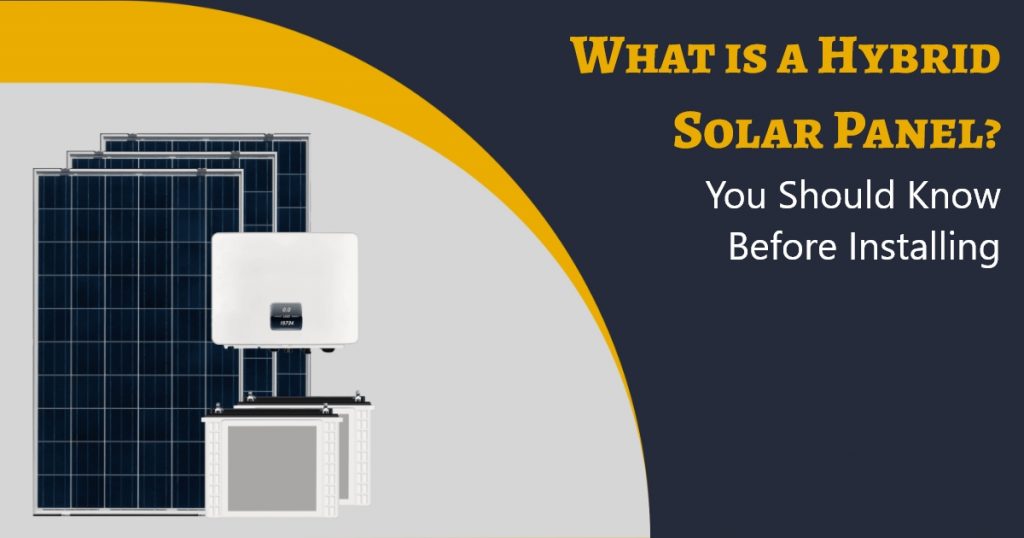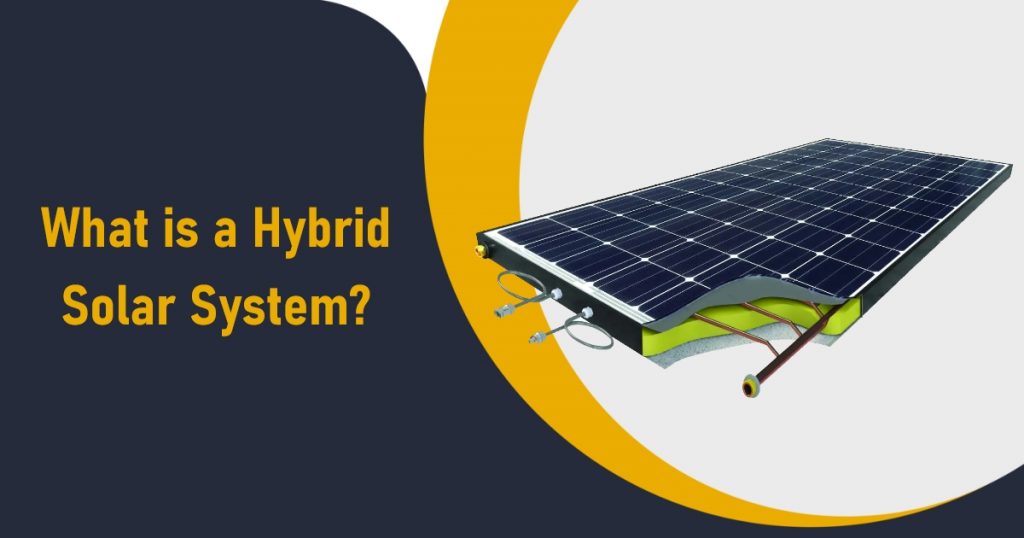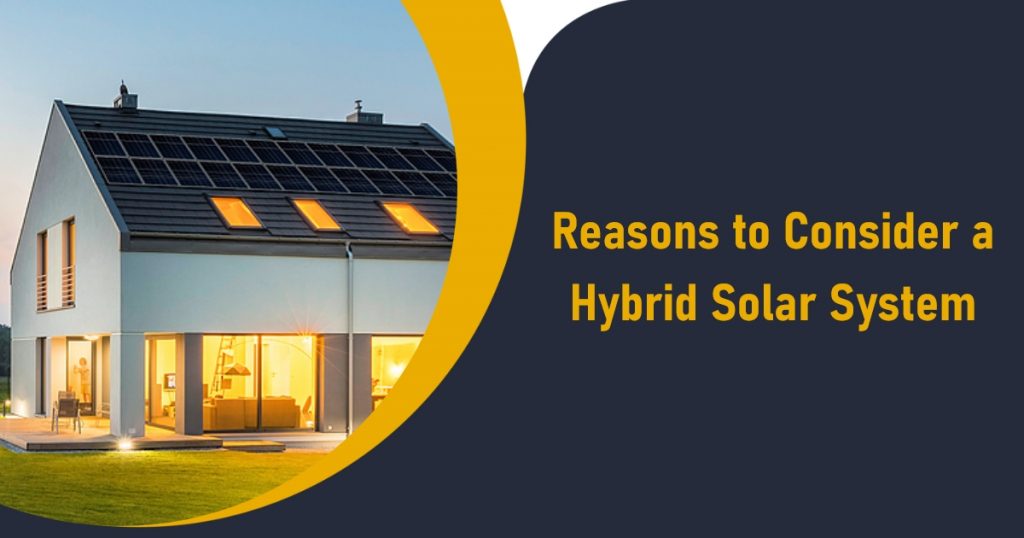What is a Hybrid Solar Panel? You Should Know Before Installing.

We only consider two options when choosing a solar energy power system. The first is an on-grid solar energy system, and the second is an off-grid solar energy system. Both of these systems are beneficial when there is plenty of sunlight. These systems are ineffective when the sun is less bright, such as at night or during rainy seasons, and you will need to find alternative energy sources.
Off-grid on-grid and hybrid solar systems are the answer to this problem. Hybrid solar systems, in general, are those that combine two renewable energy sources, such as solar and wind. On sunny days, energy is generate by solar panels, and on days when there is little sunlight but plenty of wind, energy can be generated by wind turbines. Hybrid solar energy solutions, on the other hand, have recently changed their configuration. Solar energy systems now connect to batteries to store the energy generated.
Let’s explore more about the Hybrid solar system –
What is a Hybrid Solar System?

A hybrid solar panel is a single module that combines thermal and photovoltaic technologies. The hybrid solar panel, which generates both electricity and heat; appears in front of the photovoltaic and thermal panels, which is normally install separately.
After you’ve hybrid solar panel installation, you’ll need to convert the energy they generate into electricity for your home. You can do this in a few ways: stay connected to the grid, go completely off-grid, or use a hybrid system.
When your solar panels is connect to the grid’s power lines and have a backup battery system to store excess power; you have a hybrid system. The solar panels absorb the sun’s energy, which is then converted into usable electricity by an inverter. Electricity is then delivered to your home, your battery, or the grid.
Advantages of having hybrid solar systems for your house:
- Hybrid solar systems have the advantage of storing both solar energy and low-cost electricity.
- It is now possible to use solar energy during peak usage times.
- They are use to manage energy in a more advanced way.
- Allows for energy self-sufficiency.
- Can power heavy electronics such as air conditioners, refrigerators, and coolers.
- Return on investment in 5 to 7 years, with a life expectancy of 25 to 30 years.
- Solar panels are eligible for a government subsidy of 30 to 70%.
- Is an excellent way to reduce grid power consumption.
The following are some of the disadvantages of using hybrid solar panel systems for your home:
- Hybrid Solar Panels is more expensive than grid-connected solar.
- It has a 7-15 year battery life.
- It has the potential to limit the number of appliances you can use at the same time.
- They are reliant on the capacity of the hybrid inverter.
Reasons to Consider a Hybrid Solar System

- To keep the electricity flowing if the grid goes down –
When standard on-grid solar power systems detect grid failure, they shut down. This is to keep any lineworkers working on the wires outside your house safe. They wouldn’t appreciate it if your solar panel system sent a current straight to their fingertips while they were working on your street’s wires.
- To reduce your bill at all costs –
You just have a gut feeling that sending your solar-generated electricity into the grid for half (or less) of what you pay the power company is unethical. So, by spending a lot of money on a battery, you can reduce your bill to almost nothing.
- Excellent Load management –
Unlike traditional generators, which produce a large amount of power as soon as they are turned on, most hybrid solar power systems manage load accordingly. A hybrid solar panel might have technology that adjusts the energy supply based on the devices it’s connected to, whether it’s a high-power air conditioner or a low-power fan.
- To overcome solar system ‘export limits’ imposed by your local electricity network –
A smart inverter that works in tandem with your battery bank is how hybrid solar systems get around this limitation. These hybrid inverters can be set to a maximum export rate that is significantly lower than what your system can produce when the sun is shining brightly. As a result, your 10kW solar power system may appear to the grid as a meager 2kW system. Only about 8kW is diverted to your batteries, while only about 2kW is exported to the grid.
- It provides Continuous power supply –
Because the batteries connected to the hybrid solar energy solutions store the energy, they provide power continuously and without interruption. When there is a power outage, the batteries act as an inverter to provide backup power. This is also true when the sun isn’t shining and energy do not generate; batteries provide a backup and life goes on as usual.
Also Read: – Go Solar: The Smartest Electric Power Choice.
Wrapping up –
The market for hybrid solar panels has been evolving over the years, with new models becoming available based on the technology incorporated. An all-in-one battery inverter; which combines a solar inverter and a battery inverter, is use in a hybrid solar system. The hybrid solar system with a lithium battery is a complete package when combined with clever controls.
If you were wondering whether or not you should opt for a hybrid solar system, we hope we helped you to find the right answer. You can contact the best solar panels companies in Fresno, California. For more details on installation.
10 Big Reasons to Buy Home Solar in 2021.
July 30, 2021 at 10:04 am[…] Also Read: – What is a Hybrid Solar Panel? You Should Know Before Installing. […]